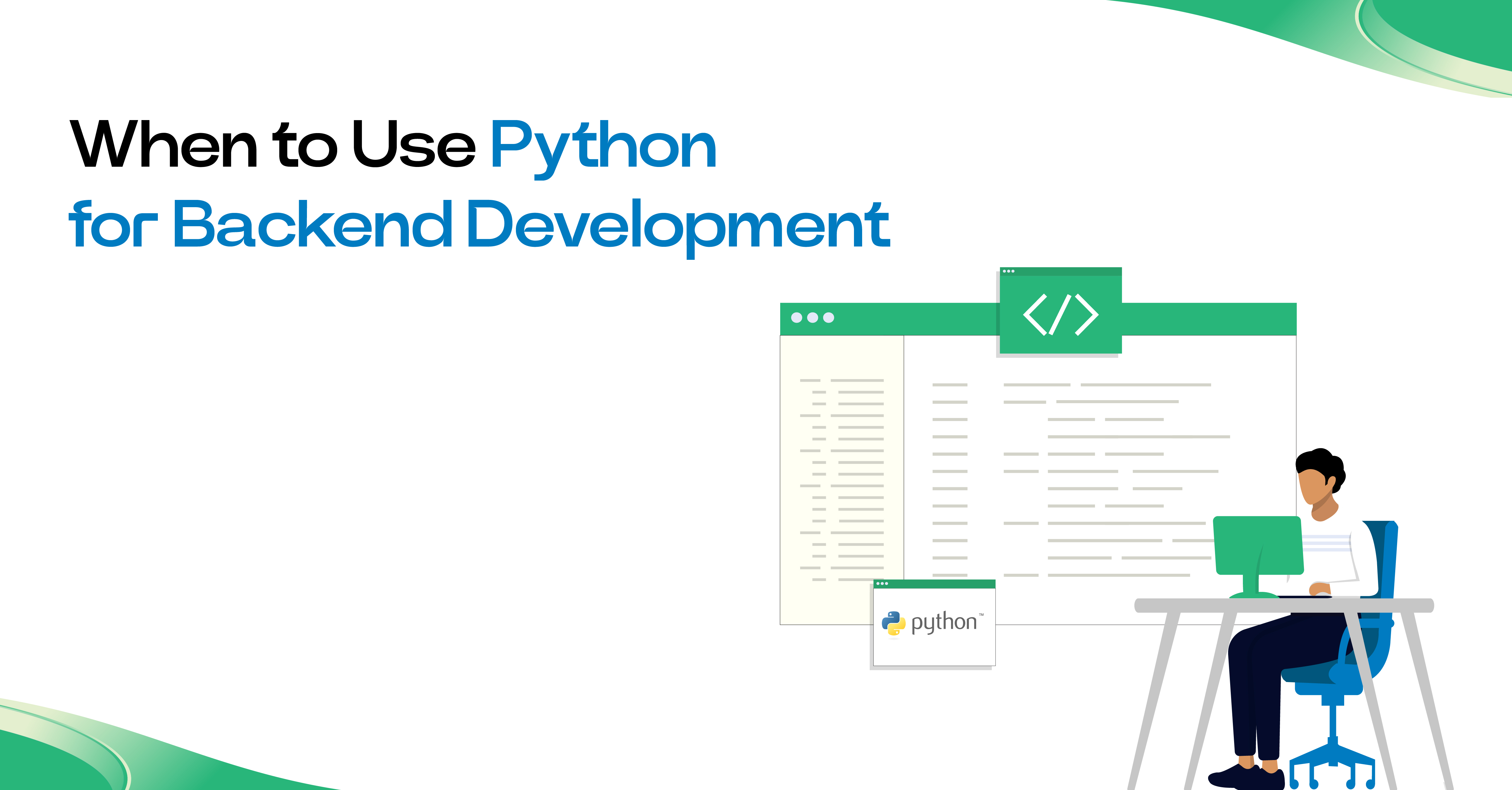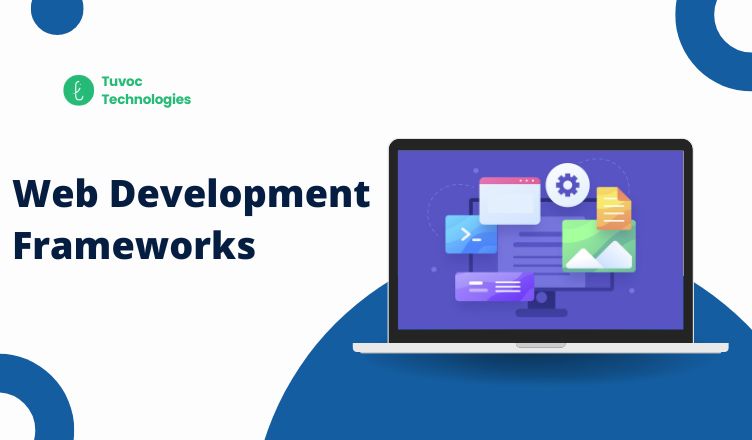Which One is better, Golang or Python, for Backend Development

Strong 8k brings an ultra-HD IPTV experience to your living room and your pocket.
The debate between the Golang vs Python still continues for backend development and is still discussed passionately in tech circles even in 2025. (We know! Our developers love getting into these debates) It’s like watching two beloved superheroes duke it out! Each with loyal fans insisting their champion is the best and can save the world better. As digital transformation moves forward and applications become more demanding, choosing the right programming language has never been more crucial for business success than now!
In our blog, we have made a comprehensive comparison that is aimed to cut through the noise and provide insights into which language best suits specific backend development needs. At Tuvoc Technologies, our experience implementing both languages across diverse projects puts us in a unique position to offer this definitive guide.
Golang vs Python: Why Does This Debate Matter?
Brief History and Current Standing
The Python programming language was created by Guido Van Rossum in 1991, and has since evolved from a scripting language to a versatile powerhouse that dominates data science, web development, and automation. Named after Monty Python, it’s perhaps the only programming language that began with a sense of humor baked right into its DNA.
Golang or Go (if you may!), was developed at Google by Robert Griesemer, Rob Pike, and Ken Thompson in 2009, and was designed with simplicity and efficiency in mind to address the complexities of modern distributed systems. If Python is the Swiss army knife that does everything, Go is the precision-engineered racing car that is built for speed and nothing else. The Go programming language vs Python represents fundamentally different philosophies about how code should work.
2025 Developer Statistics
According to the latest Stack Overflow Developer Survey 2025, Python remains among the most popular languages overall with 48.2% of developers using it regularly, while Golang has climbed to 8th place with 13.7% adoption, showing the strongest year-over-year growth among established languages at 2.3%.
The GitHub Octoverse 2025 report reveals that the repositories using Python increased by 21% in the past year, whereas Golang repositories surged by 31%, indicating its accelerating adoption for backend services. So, if languages were stocks, analysts would be shouting “BUY GOLANG! NOW!” from the rooftops.
Why Leaders Should Care
The choice between Golang vs Python isn't merely technical, it directly impacts all the following things:
- Development speed and time-to-market
- Application performance
- Scalability
- Infrastructure costs
- Talent acquisition and retention
- Long-term maintainability
As digital products become more and more centralized toward business strategy, these factors translate directly toward competitive advantage. Choose wrong, and you might find yourself explaining to the board why your app crashes every time a TikTok celebrity mentions your product.
Understanding the Python Programming Language
Background and Philosophy
The Python programming language was designed with an emphasis on code readability and developer productivity. It was created by Guido Van Rossum, who emphasized the “Batteries included” philosophy, providing a rich standard library that enables developers to accomplish tasks with minimal code. Python’s philosophy includes “Simple is better than complex,” a philosophy that many developers embrace after 3 AM debugging sessions with more elaborate languages.
Key Strengths in 2025
Python's ecosystem has continued to mature, with frameworks like Django, Flask, and FastAPI dominating web development. FastAPI in particular, has seen exponential growth, with its performance optimizations addressing many of Python's traditional speed limitations.
The Python 3.12 and 3.13 releases brought a major change and improvements to the language, including more developed typing capabilities, better memory management, and incremental improvements to the Global Interpreter Lock (GIL) limitations. The Python development world never looked more promising than before.
Python Programming Uses Across Industries
Python programming uses have maintained versatility across a number of sectors:
Finance: Fuels dynamic trading algorithms and improves risk assessment models to make smart decisions.
Healthcare: Analyzes medical data and supports innovative research applications for improved patient care.
E-commerce: Powers intuitive recommendation engines and streamlines inventory systems for a smooth shopping experience.
Media: Efficiently manages content delivery systems and provides valuable insights through analytics.
Education: Acts as the essential language for teaching programming, fostering the next generation of tech talent.
Python is essentially the duct tape of the programming world! It might not always be pretty, but it can fix just about anything.
Pros and Cons
Pros:
- Impressive exceptional readability and maintainability
- A vast ecosystem with over 450,000 packages on PyPI
- Strong community support and extensive documentation
- Versatility across domains (web development, data science, automation)
- Lower learning curve for developers
Cons:
- Performance limitations compared to compiled languages
- Global Interpreter Lock (GIL) constrains true multi-threading
- Higher resource consumption for high-load applications
- It is not ideal for CPU-intensive tasks without specialized libraries
Understanding Golang (Go)
Google's Solution to Modern Development
Developed by Google to address the challenges of building scalable infrastructure, Go pairs the efficiency of compiled languages with modern syntax and a built-in concurrency. The team that designed Go were computing legends, Ken Thompson (Unix, B language) and Rob Pike (Unix, UTF-8). When these two created the language, it was like Einstein helping you with your physics homework! You will absolutely pay attention.
Go's Concurrency Model
Go's standout feature remains its elegant approach to concurrency through goroutines and channels:
Goroutines: Lightweight threads managed by the Go runtime
Channels: Typed conduits for communication between goroutines
With this model it allowed developers to create thousands of concurrent operations with minimal resource overhead, which was a key advantage for modern microservices architecture. While Python developers were stuck explaining the GIL to their managers, Go developers were already processing their millionth concurrent request.
Go Programming Language vs Python: Design Philosophy
Where Python emphasizes expressiveness and developer flexibility, Go prioritizes simplicity and performance:
Python: "There should be one obvious way to do it"
Go: "Do more with less"
Go’s intentionally limited feature set leads to a more consistent codebase across teams, while Python’s flexibility allows for a more creative problem-solving approach. It is like comparing a haiku to a free verse! Go forces discipline, whereas Python encourages expression.
Pros and Cons
Pros:
- Exceptional performance approaching C/C++ in many scenarios
- Built-in concurrency with goroutines and channels
- Static typing with type inference reduces runtime errors
- Fast compilation and efficient memory management
- Single binary deployment simplifies operations
Cons:
- Less expressive than Python for certain tasks
- Smaller (though rapidly growing) ecosystem
- Steeper initial learning curve for some concepts
- Less dynamic than interpreted languages
- Fewer third-party libraries for specialized domains
Key Differences Between Golang and Python for Backend Development
Performance
Performance remains one of the most significant differentiators in the Go vs Python Performance debate.
2025 Benchmarks:
Raw Computation: Go outperforms Python by 25-30x for CPU-intensive tasks
Web Requests: Go handles approximately 4-8 times more requests per second than standard Python
Memory Usage: Go typically uses 30-40% less memory for comparable workloads
FastAPI and PyPy have narrowed this gap somewhat for Python, but Go’s compiled nature gives it an inherent advantage for raw performance. Comparing Go vs Python performance is like comparing an F1 car with a family sedan! Both will get you to your destination, but one will get you there much faster, but with less baggage.
Point goes to: Golang
Scalability & Concurrency
Go's concurrency model makes it exceptionally well-suited for modern distributed systems:
A single Go server can handle tens of thousands of concurrent connections
Goroutines typically consume only 2 to 4 KB’s of memory compared to Python threads' ~1MB
Go's garbage collector introduces pauses of less than 1ms in 2025 versions
Python’s asyncio library has improved its concurrency capabilities, though the GIL remains a fundamental limitation for CPU-bound workloads. So, when it comes to scalability, Python feels like it is trying to fit into your old clothes. It can be done but would require a ton of uncomfortable stretching.
Point goes to: Golang
Web Development & Frameworks
Python offers more mature and feature-rich backend frameworks:
Python Frameworks:
Django: Full-featured with admin panel, ORM, and extensive middleware
Flask: Lightweight and flexible for custom implementations
FastAPI: Modern, high-performance with automatic documentation
Go Frameworks:
Gin: High-performance with good middleware support
Echo: Minimalist with strong performance characteristics
Fiber: Express.js inspired with a focus on zero allocation
Python development frameworks generally offer more built-in functionality, while Go frameworks emphasize performance and simplicity.
Python frameworks are like fully furnished apartments, while Go frameworks are like architectural blueprints for building exactly what you need! no more, no less.
Point goes to: Python for feature richness, Go for performance
Ease of Use & Development Speed
Python's readability and expressiveness allow developers to write less code to accomplish the same tasks:
1. A typical REST API might require 30-40% less code in Python than in Go
2. Python's dynamic typing requires less ceremony for simple tasks
3. Go's compilation step adds a minor development cycle overhead
However, Go’s simplicity and consistent patterns can accelerate development for larger amounts of teams over time. Python development feels like writing a novel, whereas Go feels like writing long technical documentation with less creative freedom, but everyone gets what exactly you are trying to say and mean.
Point goes to: Python for initial development, Go for long-term team efficiency
Ecosystem & Community Support
Python's mature ecosystem includes:
1. 450,000+ packages on PyPI
2. Extensive libraries for nearly every domain
3. Deep integration with data science tools
4. Strong presence in academic and research communities
Go's ecosystem has grown substantially:
1. 200,000+ packages on pkg.go.dev (up from ~100,000 in 2022)
2. Strong infrastructure and networking libraries
3. Excellent tooling and built-in testing capabilities
4. Growing adoption in cloud-native development
The Python development community is just like a sprawling Suburban city with something for everyone, while Go’s community is like a well-planned modern city, which is less diverse but incredibly efficient.
Point goes to: Python for breadth, Go for infrastructure focus
Deployment & DevOps
Go excels in modern deployment scenarios:
1. Single binary deployment simplifies containerization
2. Smaller Docker images (often 15-20MB vs Python's 100MB+)
3. Lower resource requirements benefit Kubernetes deployments
4. Faster startup times improve auto-scaling responsiveness
Python development offers broader adoption, which means that more deployment options:
1. Extensive hosting support across all major platforms
2. Rich integration with serverless offerings
3. More established CI/CD pipeline support
Go deployments are like traveling with just one carry-on luggage, while Python deployments often make you check on your several bags. DevOps teams tend to develop a noticeable preference rather quickly.
When to Use Python for Backend Development
Ideal Use Cases
The Python programming language shines in scenarios that prioritize:
1. Data-Intensive Applications: When your backend needs to process, analyze, or visualize data
2. Machine Learning Integration: When AI/ML components are central to your application
3. Rapid Prototyping: When you need to validate concepts quickly
4. Admin-Heavy Applications: When comprehensive admin interfaces are required
5. Team Familiarity: When your team has Python expertise
Python Development Company Perspective
As a Python development company, Tuvoc Technologies has found Python particularly valuable for:
1. Startups needing to iterate quickly with limited resources
2. Projects requiring integration with data science workflows
3. Applications with complex business logic but moderate traffic
4. Systems needing extensive third-party integrations
We've learned that the right programming language choice is like picking the right tool, and if you use a hammer when you need a screwdriver, it leads to both frustration and thumb injuries.
Python Programming Uses in Modern Businesses
Python programming uses back critical systems across industries:
Financial Services: Risk analysis and transaction processing systems
E-commerce: Inventory management and recommendation engines
Healthcare: Patient data processing and medical research
Media: Content management and distribution systems
Education: Learning management systems and assessment platforms
When to Use Golang for Backend Development
Ideal Use Cases
Go vs Python for Backend: Go excels when your project requires:
1. High Performance at Scale: When handling thousands of concurrent users
2. Microservices Architecture: When building distributed systems
3. Real-Time Applications: When low latency is critical
4. Resource-Constrained Environments: When optimizing infrastructure costs
5. Network-Heavy Applications: APIs, proxies, and message processors
What Makes Golang Better than Python for Backend Development?
What makes Golang better than Python for backend development? Well, Go offers a distinct advantages for specific backend development scenarios:
1. Consistent Performance: Predictable response times even under load
2. Deployment Simplicity: Single binary deployment reduces operational complexity
3. Resource Efficiency: Lower CPU and memory footprint translates to infrastructure savings
4. Built for Distribution: Native tooling for modern distributed systems
5. Team Scalability: Enforced simplicity keeps codebases maintainable as teams grow
Go’s performance advantages have become more pronounced as user load increases, making it the superior choice even for high-scale applications. If Python is like your comfort food, then Go could be considered as protein powder! Less satisfying to work with, but as you get used to it, you start appreciating the results under pressure.
Practical Steps on How to Use Golang for Backend Development
Setting Up Your Environment
How to use Golang for backend development? Getting started with Go for backend development is pretty straightforward:
Install Go from golang.org
Set up your project structure following Go conventions:
myproject/
├── cmd/ # Application entry points
├── internal/ # Private code
├── pkg/ # Public libraries
├── api/ # API definitions
└── go.mod # Dependency management
Initialize your module: go mod init github.com/yourusername/project
Unlike setting up a Python environment, Which sometimes feels like negotiating an international peace treaty between conflicting package versions, Go’s setup is refreshingly very simple.
Using Modern Go Frameworks
For backend development, consider these frameworks:
Gin: Fast, with good middleware ecosystem
r := gin.Default()
r.GET("/api/data", getDataHandler)
r.Run()
Echo: Minimalist but powerful
e := echo.New()
e.GET("/api/data", getDataHandler)
e.Start(":8080")
Fiber: Express.js-inspired for easy transition
app := fiber.New()
app.Get("/api/data", getDataHandler)
app.Listen(":8080")
Go code is like minimalist architecture! what's not there is as important as what is.
Best Practices for Go Backends
Embrace Go's concurrency patterns for I/O operations
Use context for request cancellation and timeouts
Structure applications as composable packages
Leverage interfaces for flexible design
Embrace explicit error handling
Using Go without leveraging its concurrency is like buying a sports car and never exceeding 30 mph! Technically, it's possible, but you're missing the point entirely.
Future outlook beyond 2025
Python's Evolution
Python continues to address its historical limitations:
1. Faster Python Initiative: Ongoing performance optimizations have yielded up to 10-30% speedups
2. GIL Improvements: Python 3.13 introduced experimental threading improvements, which was a big deal.
3. Stronger Typing: Gradual typing features continue to mature and will keep on maturing.
4. Specialized Runtimes: Mojo has brought compelling performance to ML-focused Python
The Python programming language is like that friend who keeps reinventing themselves, trying out new things, and just when you think you know them, they surprise you with new capabilities.
Go's Trajectory
Go's evolution remains focused:
1. Generics Maturity: Introduced in Go 1.18, generics are now well-established with best practices
2. Improved Developer Experience: Better error messages and debugging tools
3. Extended Standard Library: More batteries included while maintaining simplicity
4. Workspace Tooling: Enhanced multi-module development support
Go’s development is like watching precision engineering, extremely methodological improvements that maintain the language’s core principles.
The Rise of Polyglot Architectures
1. The most sophisticated teams in 2025 are embracing polyglot approaches! Why?
2. Python for Data Processing: Handling complex data workflows and analysis
3. Go for API Services: Providing high-performance interfaces to those workflows
4. Service Mesh Integration: Allowing seamless communication between components
This hybrid approach not only provides better results, but by leveraging each language’s strengths, it reduces their weaknesses. It is like you have a Swiss Army knife and a power drill in your same toolbox! Sometimes versatility is needed wherein, in some cases, you need the raw power.
Conclusion
As of right now, there is no clear winner in this decade-old debate of Golang vs Python, as each language has their own set of pros and cons. Your choice should align as per your specific project requirements, team expertise, and business goals.
Choose Python when:
- Developer productivity is paramount
- Your application is data-intensive
- For Better AI integration
- Your team has Python expertise
Choose Go when:
- Performance and scalability are critical
- You're building microservices
- Resource efficiency matters
- You need predictable performance
Many successful organizations leverage both languages, using each where it shines brightest. After all, you wouldn't bring just one type of screwdriver to rebuild an engine, would you?
Call to Action
Ready to leverage the right technology for your backend development requirements? We at Tuvoc Technologies offer expertise in both Python and Golang development, ensuring that your project uses the optimal approach for your specific requirements.
Whether you're looking to hire Python developer talent for data-intensive applications or Golang experts for high-performance services, our team can deliver robust, scalable backend development services that drive your business forward.
Contact us today to discuss your backend development needs and discover how our technical expertise can transform your digital presence.
Note: IndiBlogHub features both user-submitted and editorial content. We do not verify third-party contributions. Read our Disclaimer and Privacy Policyfor details.



